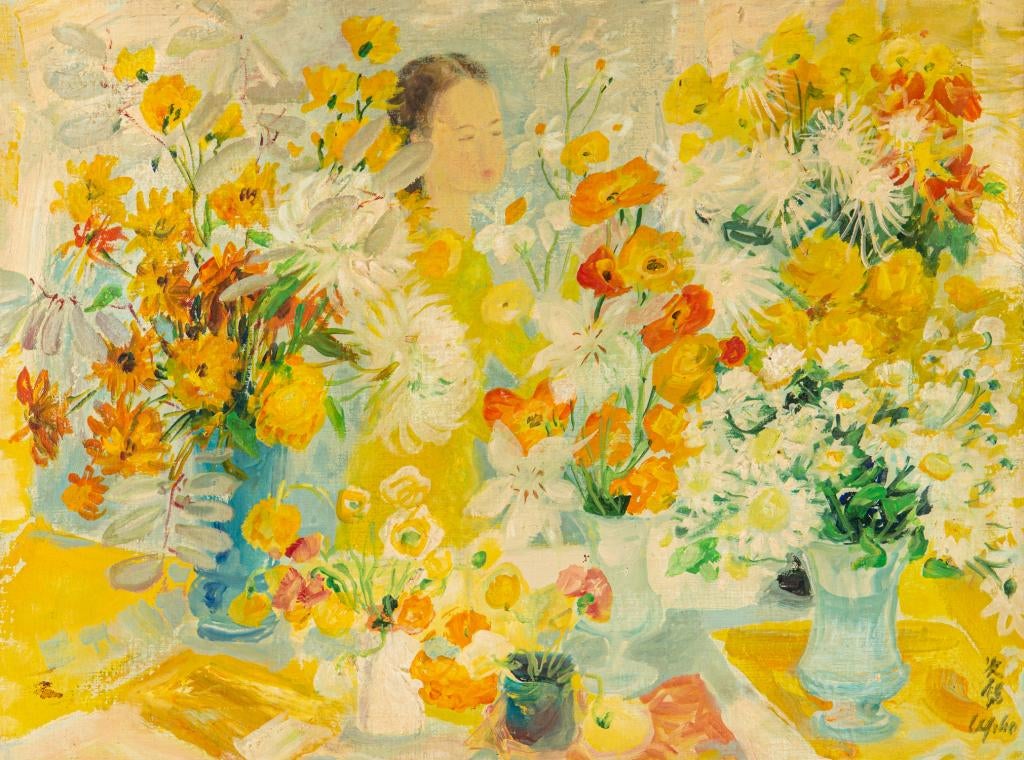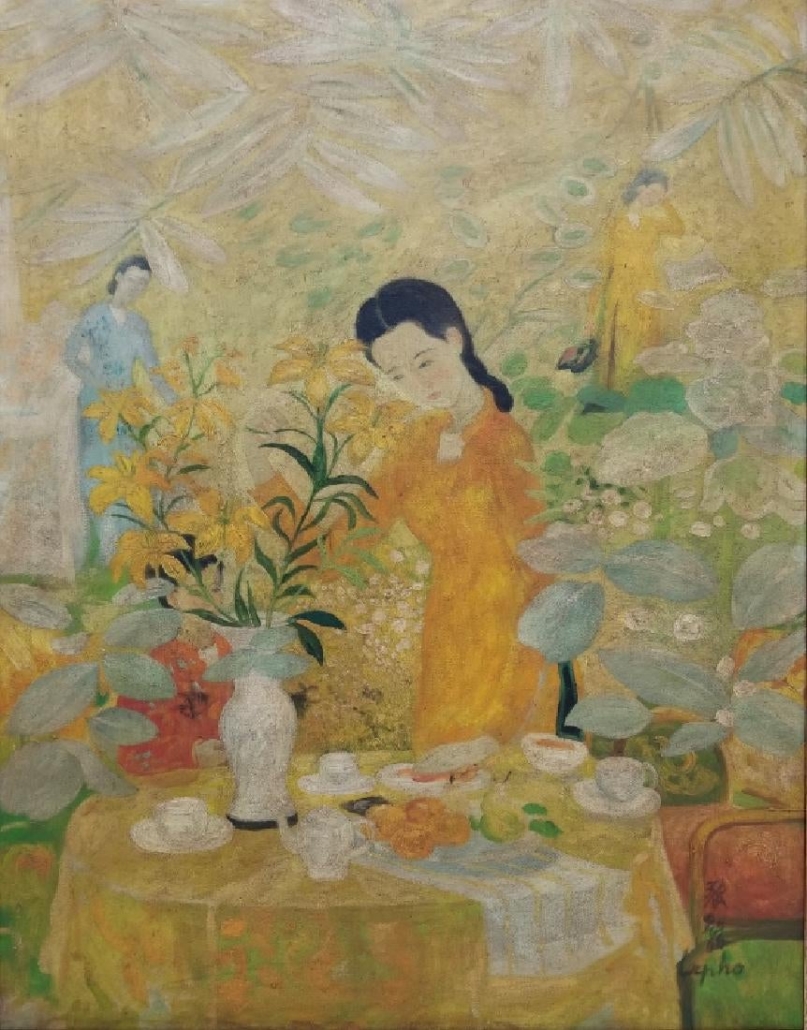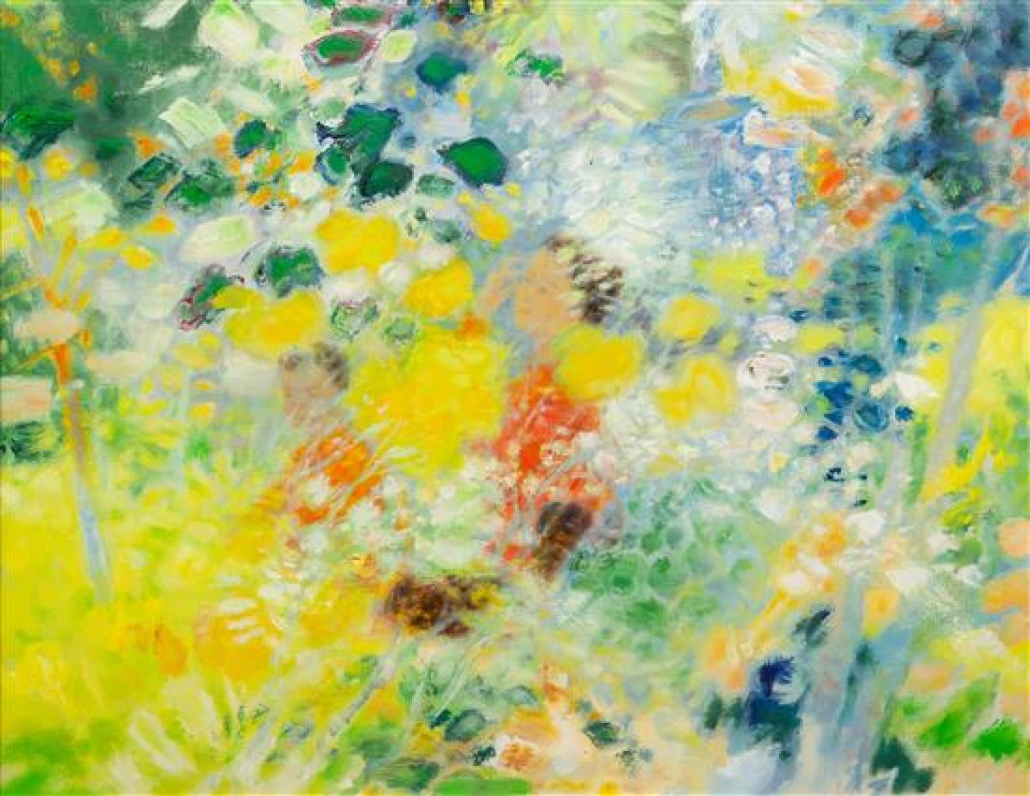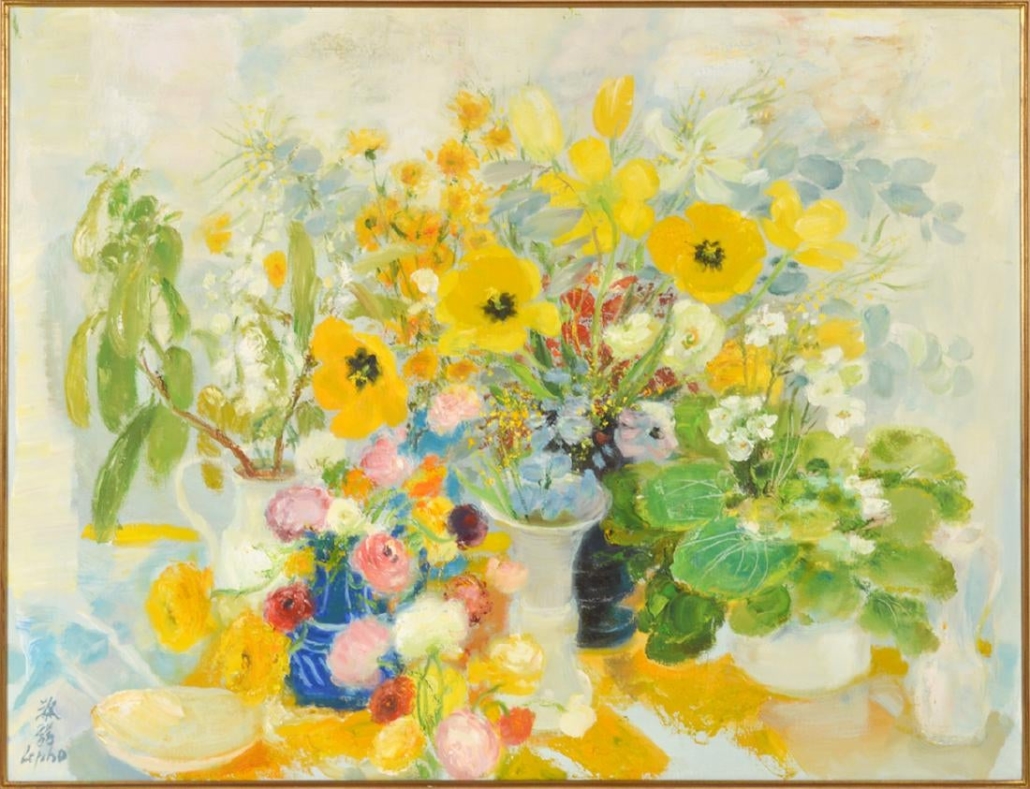
NEW YORK – Vietnamese art has historically received less respect in the world’s art market than many other Southeast Asian countries, but one artist who enjoyed a consistently strong presence in both private collections and at auction was Lê Phổ (1907-2001). Born in Hanoi and schooled there and in Paris, Lê Phổ was one of the first artists to blend Western Impressionism with classical Vietnamese motifs. Today, he is best known for his lush paintings of flowers and lovely women.
It’s no small feat rising to the top of the Parisian art world, especially one that was so crowded with talent in the mid-20th century. But Lê Phổ arrived in Paris in 1930, having already studied at the Ecole des Beaux-Arts in Hanoi starting when he was a teenager. He earned a scholarship to study for two years in France, at the Ecole des Beaux-Arts in Paris, where he learned under the instruction of Victor Tardieu, a friend of the renowned French artist Henri Matisse (1869-1954).
Lê Phổ returned to Hanoi – to teach at the Ecole Superieure des Beaux Arts de Indochine in Hanoi – but returned to Paris in 1937 to be part of the International Exposition. The following year he had his first one-man show in Paris, which officially launched a hugely successful career across all of Europe. His experience in Paris, combined with the French colonial influence in Vietnam in the late 19th and early 20th centuries, linked Lê Phổ to the Impressionist movement.

Lê Phổ became famous for his paintings of Vietnamese scenery, still lifes with flowers, family settings and portraits. His work was a brilliantly captivating blend of Oriental style with the main influences of contemporary Western art. His work displays a certain elegance, to go with great artistry and imagination. His paintings at once suggest a background of culture and good taste.
“I think one of the things that separated Lê Phổ from his contemporaries was his sense of fantasy,” said Lauren Bradley, a Fine Arts Specialist with Rago Arts & Auction in Lambertville, New Jersey. “Many Impressionists were focused on conveying the realities of the natural world, but Lê Phổ’s work has a real sense of whimsy and imagination. Prior to painting on canvas, he did almost all of his paintings on silk, which allowed him to cultivate an original technique that also made his work stand out.”
Joseph Stanfield, Director of Fine Art at Hindman in Chicago, said, “Lê Phổ was a wonderful colorist and created very calm and pleasing Impressionistic compositions. But one of the main reasons I feel that his work achieved such success is that he had great representation. He was shown at Wally Findlay Galleries starting in the 1960s in Chicago, New York and Palm Beach and this allowed his work to be seen at multiple venues across the country.”

Indeed, Findlay Galleries has represented Lê Phổ on an exclusive basis since the early 1960s, after Wally Findlay visited Paris, saw Lê Phổ’s work in a one-man show and was instantly captivated. The two men forged a friendship and working relationship that lasted for decades until both men’s passing. It continues today with Findlay Galleries still representing the artist’s paintings. Following are a few excerpts from Findlay Galleries’ website:
“The sensitive, subtle, beautiful paintings by Lê Phổ are a fascinating blend of Oriental artistry with influences of contemporary Western art. For the most part, the artist specialized in semi-Impressionist studies of flowers and figures and handled them with delicacy and unusually fluid transparency of color.”
“In his early years, Lê Phổ preferred painting on silk instead of canvas, an in doing so developed a technique all his own. He then painted on canvas, and even on this sturdier material he achieved great richness and a completely unique surface texture, which suggests the delicacy of the silk he formerly used.”

“Lê Phổ’s artwork has a distinct elegance, along with imagination and artistry, which immediately suggests a background of culture and taste. Consequently, one is not surprised to learn that he was the son of the Viceroy of Tonkin (in Vietnam) and that his first one-man show in Paris was considered sufficiently important to be sponsored by the Embassy of Indo-China.”
Lê Phổ’s work is often divided into three distinct styles. The first is from his period in Hanoi, and on to his first couple years in Paris. In works from this period we see depictions of the Vietnamese landscape of the artist’s youth, paintings that are steeped with nostalgia and the historical magnificence of the country.
Following this style came what is commonly known as Lê Phổ’s Romanet period, named after the French gallery owner who became Lê Phổ’s major promoter. This period would last until 1963, when Le Pho’s work was noticed by Wally Findlay, who ordered many of his canvases and sold them to the American market. This marked the beginning of Lê Phổ’s final artistic period, his Findlay Period.
The Findlay Period is perhaps Le Pho’s most recognizable period, during which he produced more works in oil on canvas and featured his distinctly depicted Vietnamese women surrounded by lush landscapes. Many people consider the strong shifts in medium, subject, and style between these three periods to be a testament to Lê Phổ’s versatility as an artist.

With regard to market demand, Lauren Bradley said, “Lê Phổ’s work is in high demand in today’s market. His varied subject matter attracts a variety of collectors, whether they’re interested in depictions of traditional Vietnamese life, his tender depictions of mother and child, or vibrant lively floral still lifes. While his work remains incredibly popular in his native Vietnam, his collector base is undeniably international.”
Joseph Stanfield concurred. “The market for Lê Phổ is very strong as we speak and has been on the rise,” he said. “We have had more interested bidders on Lê Phổ this year than we did two to three years ago and we feel that the market will continue to be robust.”
Lê Phổ’s auction record was set in May 2019, when a nude portrait sold at Christie’s Hong Kong for a little more than $1.4 million, well above the high estimate of $774,100. However, most of his paintings sell in the $50,000-$100,000 range. At Heritage Auctions in 2018, his painting Les deux enfants et les roses (Two children and roses) sold for $50,000. Also in 2018, his Mere et l’enfant (Mother and child) soared to $170,100 at Brunk Auctions, more than triple the high estimate. Le Pho’s popularity at auction shows no signs of abating.
# # # #

